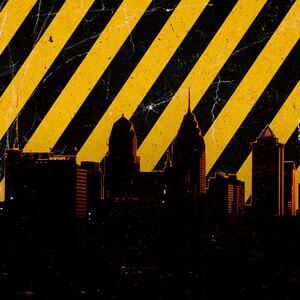The two gunmen stepped from a car as 14-year-old Samir Jefferson was waiting to catch a Philadelphia city bus home from Thomas Edison High School just before 3:30 p.m. on Monday.
The gunmen began firing and Jefferson fled alongside a Rite Aid store on Wyoming Avenue. The gunmen continued blazing away as they gave chase. Police would later use bits of adhesive tape to mark a line of a dozen bullet gouges in the bricks. Evidence markers numbered 1-35 would be placed by the shell casings that littered the street.
Jefferson collapsed 200 feet away with 18 wounds. He was the third gunshot victim in two days to be pronounced dead at Temple University Hospital.
ADVERTISEMENT
On Sunday afternoon, a 21-year-old Temple University student named Samuel Sean Collington had been rushed into the emergency room with two fatal gunshot wounds to the chest. He had been shot in a street robbery just as he was returning home from spending Thanksgiving with his family.
That night, 16-year-old Kanye Davis was brought into the hospital after being shot eight times while sitting in a car. He also proved to be beyond saving.
The three deaths brought the number of homicides in Philadelphia to 507 so far this year, which has already topped the previous all-time annual record of 500 set in 1990. More than 2,000 other people have survived shootings.
Temple said on Tuesday that it was unable to provide stats for this year but that the number of stabbing and shooting victims treated at its facility alone exceeded 200 last year. Temple has also treated its share of COVID-19 cases, especially during the first big surge.
“Twin epidemics going on simultaneously,” Scott Charles, the hospital’s trauma outreach manager, told The Daily Beast on Tuesday.
Charles’ primary duties are to oversee Temple’s violence prevention and intervention initiatives, along with victim assistance. Prior to COVID, he would bring public school kids into the hospital for a behind-the-scenes look at what bullets can do. And he sent teams into the neighborhoods to teach “basically gunshot first aid.”
But during the height of the pandemic, Charles was asked to lend a hand in the struggle against the virus.
“I was seeing people overwhelming the system with COVID,” Charles said. “At the same time, my pager is going off, alerting me to gun violence.”
The COVID cases in Philly subsided, but in Charles’ view the lasting impact of the pandemic was a factor in a continued rise in shootings. families that were already struggling were suddenly left without elders and breadwinners.
“It took away a lot of guardrails,” Charles said. “When they died, it destabilized the home and that destabilized the neighborhoods, and there’s a real sense of desperation out there.”
And, in his view, the whole country has become quicker to anger.
“It’s made all of us a little less kind,” he said. “You see that in the street, in traffic, in grocery stores. We see that everywhere.”
At the same time, Charles believes, federal stimulus checks contributed to the proliferation of firearms among Philadelphia’s inner city residents.
“One thing that changed is they suddenly had the means to buy handguns,” he said. “You don’t want to be the one bringing a fist to a gunfight. And in many ways it became a hyperlocal arms race.”
But being fully armed is not as effective at warding off the emotional impact of the pandemic as being fully vaccinated is against the virus itself. Charles senses that the young in particular have been left feeling untethered and insecure. And, in his view, that can intensify disputes on social media.
“Every slight is magnified,” he said .
Kids tell him that conflicts online increasingly lead to gunfire in the street.
“They feel like social media drives a lot of the violence,” Charles said
A local TV news outlet reported that Jefferson’s family says he had sent someone an Instagram message about a fight some 15 minutes before the gunmen appeared.
What is certain is that a 14-year-old kid was shot 18 times as he waited for the No. 57 bus home from school in an already troubled time when we are all waiting to see if a new variant will trigger another surge and maybe a further unraveling.
The white chalk circles that arriving police had drawn around the shell casings in the street on Sunday afternoon were still visible in news footage on Tuesday. So was a message chalked in pink on the sidewalk.
“RIP SAMIR.”






